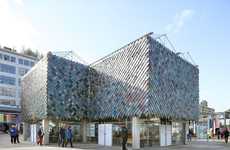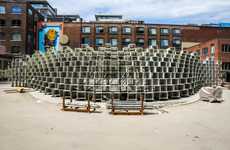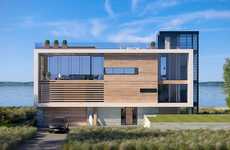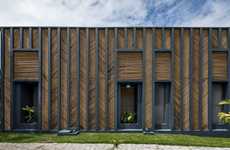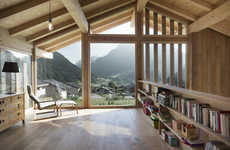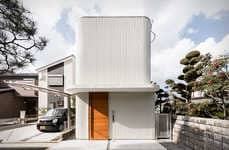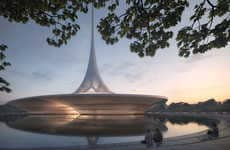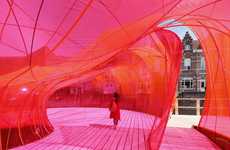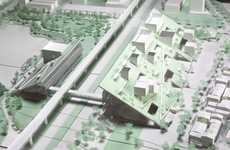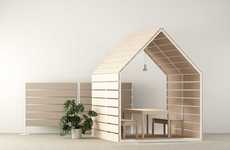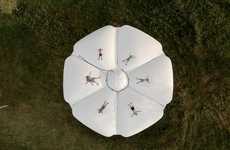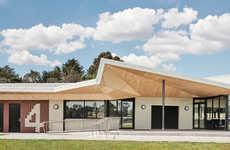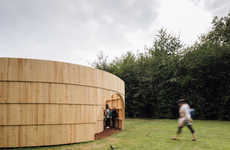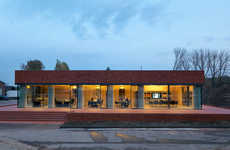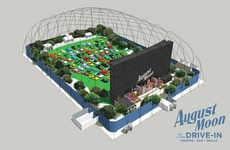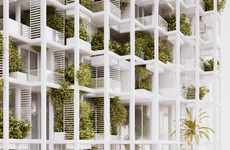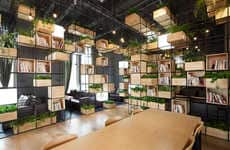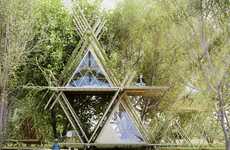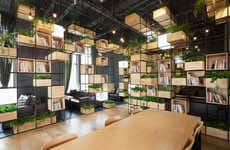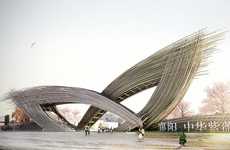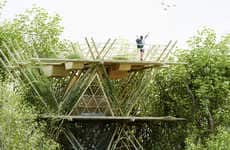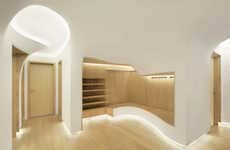
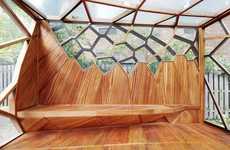


Pavilions are created with recycled and repurposed materials
Trend - The sight of a pavilion often evokes a sense of relief for its ability to provide shelter, or curiosity for its distinct design–and architecture brands are taking advantage of this fact by creating pavilions with recycled and repurposed materials. These small but attractive and functional structures reveal the potential in the world of architecture to adapt to environmental needs.
Insight - Both people and institutions are increasingly concerned with the impending consequences of climate change, with everything from food resources to lifestyles subject to change in the coming decades due to environmental warming and catastrophes. On both local and global levels, people and brands are aiming to push for the future of consumption and construction to be more adaptive and thoughtful in its approach to how it impacts the climate.
Insight - Both people and institutions are increasingly concerned with the impending consequences of climate change, with everything from food resources to lifestyles subject to change in the coming decades due to environmental warming and catastrophes. On both local and global levels, people and brands are aiming to push for the future of consumption and construction to be more adaptive and thoughtful in its approach to how it impacts the climate.
Workshop Question - In what way could your brand better adopt ecological policies or production processes?
Trend Themes
1. Sustainable Architecture - Architecture firms are designing pavilions with recycled and repurposed materials, while modular housing systems and buildings constructed from waste materials are becoming more popular.
2. Plastic Waste Reduction - The use of recycled plastic as a primary building material is being explored, and projects such as Recycled Park aim to retrieve plastic waste from water sources and repurpose it into building materials.
3. Nature-inspired Design - Designers are drawing inspiration from nature, with designs such as the Dragonfly Pavilion and spiky recycled pavilions taking cues from insect morphology and granular mass structures found in nature.
Industry Implications
1. Architecture and Construction - Innovation opportunities abound for firms to utilize sustainable building materials and modular construction systems, reducing the environmental impact of construction.
2. Waste Management - As projects such as Recycled Park demonstrate, the repurposing of waste materials can create innovative solutions to environmental problems and reduce the amount of waste that ends up in landfills or water sources.
3. Design and Decor - Nature-inspired designs can create visually stunning and unique structures, while the use of recycled materials can create a sense of eco-consciousness in design choices.
5 Featured, 45 Examples:
461,152 Total Clicks
Date Range:
Oct 15 — Oct 18
Trending:
Warm
Consumer Insight Topics:
